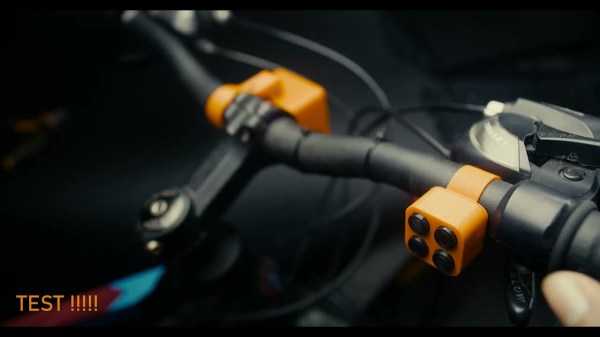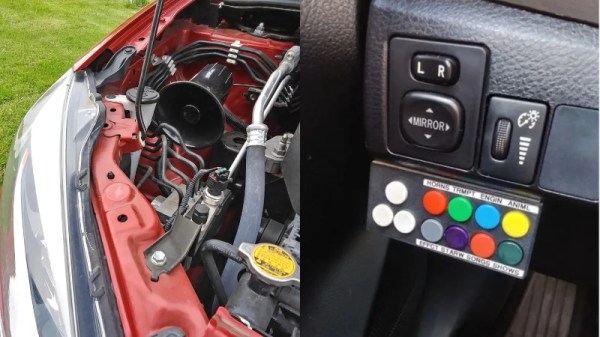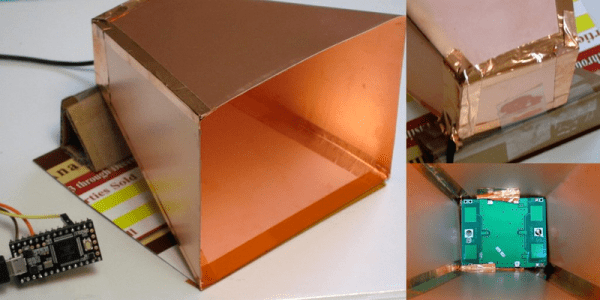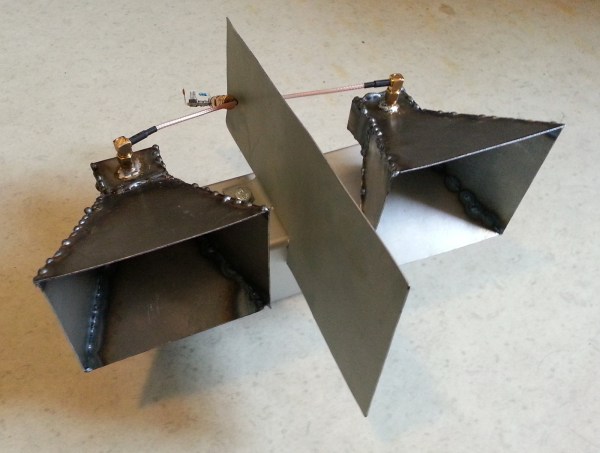They’re back! The San Francisco autonomous vehicle hijinks, that is, as Waymo’s fleet of driverless cars recently took up the fun new hobby of honking their horns in the wee hours of the morning. Meat-based neighbors of a Waymo parking lot in the South Market neighborhood took offense at the fleet of autonomous vehicles sounding off at 4:00 AM as they shuffled themselves around in the parking lot in a slow-motion ballet of undetermined purpose. The horn-honking is apparently by design, as the cars are programmed to tootle their horn trumpets melodiously if they detect another vehicle backing up into them. That’s understandable; we’ve tootled ourselves under these conditions, with vigor, even. But when the parking lot is full of cars that (presumably) can’t hear the honking and (also presumably) know where the other driverless vehicles are as well as their intent, what’s the point? Luckily, Waymo is on the case, as they issued a fix to keep the peace. Unfortunately, it sounds like the fix is just to geofence the lot and inhibit honking there, which seems like just a band-aid to us.
horn9 Articles
Digital Bike Horn Will Play Custom Sounds, Please Be Tasteful
When you’re out riding your bike, a horn can be a useful warning device to other road users and pedestrians alike. It can also be a source of fun and amusement, or annoyance, depending on the sounds it makes and how you use it. For the ultimate flexibility, you might like this digital bicycle horn that offers customizable sounds, as developed by [gokux].
The build has attractive two-tone components, consisting of a button pad for playing four sounds, and a sound module with a 3 watt speaker and battery pack. A Seeed Studio XIAO SAMD21 is the heart of the operation, with the microcontroller paired with a DFPlayer Mini which handles sound duties. When one of the four buttons is pressed, the microcontroller loads the relevant sound off an SD card, and plays it out over the speaker. For power, the build uses a lithium rechargeable battery with a healthy 1200 mAh capacity, which can be readily recharged thanks to a TP4056 charger module with a USB-C port.
It’s a nifty little build, and we love the Metal Gear Solid sounds. Though, we do wonder just how audible that 3 watt speaker is. If it proves inadequate, you could always step up to a much larger driver paired with a hefty audio amp if you so desire.
Continue reading “Digital Bike Horn Will Play Custom Sounds, Please Be Tasteful”
Custom Car Horn Makes Many Sounds
A regular car horn is fine, but lacks finesse for more subtle communication. For example, some car horns aren’t particularly adept at short indicatory honks, and can only blare loudly regardless of the situation. For a fancier solution, [Tom Hammond] whipped up a custom car horn capable of playing a wide variety of sounds.
The system uses the Adafruit Audio FX board. This is a unique part, which is designed to enable people to build sound-based projects without the need for a microcontroller or any other similar hardware. Instead, the device can be connected to a computer over USB in mass storage mode, and its 16MB in-built memory can be loaded with sound files. It then plays these when buttons are pressed, hooked up to its 11 trigger inputs.
The Audio FX board has its output hooked up to a 120W amplifier, which then feeds into a pair of 15W PA-style horns. These are incredibly loud devices, though lack bass, so they’re really only good for throwing low-quality sound out in a noisy environment. For a car horn, that’s perfect.
The result is that [Tom] can press a number of buttons on his dash to play different sounds, from courtesy honks to animal noises and obnoxious sound effects. The great thing is that the sounds in question can be easily customized to the user’s tastes. [Tom] also deserves a tip of the hat for explaining in great detail how to actually install the project in the average car.
We don’t often see car horns around these parts, though they do make for an awfully loud alarm clock. If you’ve got your own nifty car accessories that you’re cooking up, be sure to drop us a line!
Probe The Galaxy On A Shoestring With This DIY Hydrogen-Line Telescope
Foil-lined foam insulation board, scraps of lumber, and a paint-thinner can hardly sound like the tools of a radio astronomer. But when coupled with an SDR, a couple of amplifiers, and a fair amount of trial-and-error tweaking, it’s possible to build your own hydrogen-line radio telescope and use it to image the galaxy.
As the wonderfully named [ArtichokeHeartAttack] explains in the remarkably thorough project documentation, the characteristic 1420.4-MHz signal emitted when the spins of a hydrogen atom’s proton and electron flip relative to each other is a vital tool for exploring the universe. It lets you see not only where the hydrogen is, but which way it’s moving if you analyze the Doppler shift of the signal.
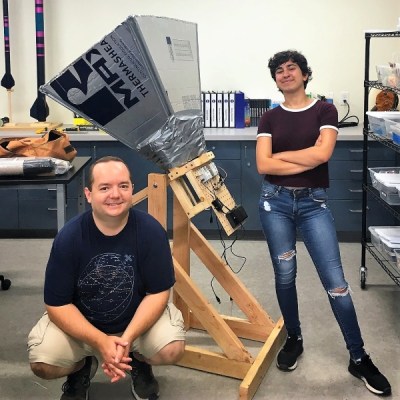 But to do any of this, you need a receiver, and that starts with a horn antenna to collect the weak signal. In collaboration with a former student, high school teacher [ArtichokeHeartAttack] built a pyramidal horn antenna of insulation board and foil tape. This collects RF signals and directs them to the waveguide, built from a rectangular paint thinner can with a quarter-wavelength stub antenna protruding into it. The signal from the antenna is then piped into an inexpensive low-noise amplifier (LNA) specifically designed for the hydrogen line, some preamps, a bandpass filter, and finally into an AirSpy SDR. GNURadio was used to build the spectrometer needed to determine the galactic rotation curve, or the speed of rotation of the Milky Way galaxy relative to distance from its center.
But to do any of this, you need a receiver, and that starts with a horn antenna to collect the weak signal. In collaboration with a former student, high school teacher [ArtichokeHeartAttack] built a pyramidal horn antenna of insulation board and foil tape. This collects RF signals and directs them to the waveguide, built from a rectangular paint thinner can with a quarter-wavelength stub antenna protruding into it. The signal from the antenna is then piped into an inexpensive low-noise amplifier (LNA) specifically designed for the hydrogen line, some preamps, a bandpass filter, and finally into an AirSpy SDR. GNURadio was used to build the spectrometer needed to determine the galactic rotation curve, or the speed of rotation of the Milky Way galaxy relative to distance from its center.
We’ve seen other budget H-line SDR receiver builds before, but this one sets itself apart by the quality of the documentation alone, not to mention the infectious spirit that it captures. Here’s hoping that it finds its way into a STEM lesson plan and shows some students what’s possible on a limited budget.
Making A Cheap Radar Unit Awesome
[JBeale] squeezed every last drop of performance from a $5 Doppler radar module, and the secrets of that success are half hardware, half firmware, and all hack.
On the hardware side, the first prototype radar horn was made out of cardboard with aluminum foil taped around it. With the concept proven, [JBeale] made a second horn out of thin copper-clad sheets, but reports that the performance is just about the same. The other hardware hack was simply to tack a wire on the radar module’s analog output and add a simple op-amp gain stage, which extended the sensing range well beyond the ten feet or so that these things are usually used for.
With all that signal coming in, [JBeale] separates out the noise by taking an FFT of the Doppler frequency-shift signal. Figuring that people walk around 2.2 miles per hour, [JBeale] focuses on the corresponding 70 Hz frequency bin and finds that the radar will detect people out to 80 feet. Wow!
This trick of taking an el-cheapo radar unit and amplifying the signal to do something useful isn’t new to Hackaday. [Mathieu] did it with the very same HB-100 unit way back in 2013, and then again with a more modern CDM324 model. But [JBeale]’s hacked horn and clever backend processing push out the limits of what you can expect to do with these cheap units. Kudos.
[via PJRC]
Building A Horn Antenna For Radar
So you’ve built yourself an awesome radar system but it’s not performing as well as you had hoped. You assume this may have something to do with the tin cans you are using for antennas. The obvious next step is to design and build a horn antenna spec’d to work for your radar system. [Henrik] did exactly this as a way to improve upon his frequency modulated continuous wave radar system.
To start out, [Henrik] designed the antenna using CST software, an electromagnetic simulation program intended for this type of work. His final design consists of a horn shape with a 100mm x 85mm aperture and a length of 90mm. The software simulation showed an expected gain of 14.4dB and a beam width of 35 degrees. His old cantennas only had about 6dB with a width of around 100 degrees.
The two-dimensional components of the antenna were all cut from sheet metal. These pieces were then welded together. [Henrik] admits that his precision may be off by as much as 2mm in some cases, which will affect the performance of the antenna. A sheet of metal was also placed between the two horns in order to reduce coupling between the antennas.
[Henrik] tested his new antenna in a local football field. He found that his real life antenna did not perform quite as well as the simulation. He was able to achieve about 10dB gain with a field width of 44 degrees. It’s still a vast improvement over the cantenna design.
If you haven’t given Radar a whirl yet, check out [Greg Charvat’s] words of encouragement and then dive right in!
Halloween Props: The Honking Pumpkin

We see a lot of Halloween projects attempt to scare people. Many of them work with the element of surprise, jumping or flashing lights when triggered. We’ve noticed though, people have come to expect those things. This project is a real sleeper. No one expects a couple car horns to blare in their face when they push the pumpkin’s nose. We know it would make us jump. You can see it in action as well as get the entire circuit from his site. We doubt his neighbors will find it as amusing as we do.
[via Hacked Gadgets]


